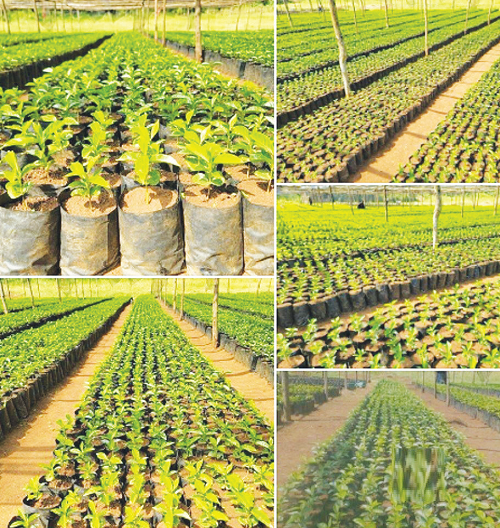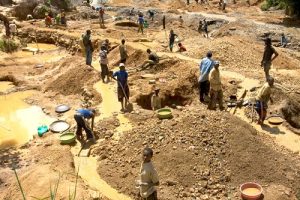
Ethiopia has faced serious environmental problems, such as deforestation, soil erosion, and biodiversity loss. In response to these issues, the Green Legacy Initiative was launched, to plant billions of trees around the country.
Ethiopia’s Green Legacy Initiative is a tree-planting initiative that aims to halt desertification and deforestation. The project was launched in 2019 by Ethiopia’s Prime Minister, Abiy Ahmed, as a part of his larger initiatives to solve the nation’s environmental challenges.
The initiative has garnered widespread support from the Ethiopian population, with millions of people participating in tree-planting events. The government has also mobilized various institutions and organizations to support the initiative, including the military and civil servants. Hence, the initiative has received overwhelming support from the Ethiopian people, as seen by the millions of individuals who have taken part in tree-planting programs.
As a result, the Ethiopian Green Legacy Initiative has had various positive impacts since its inception, including reforestation and afforestation. Millions of trees have been planted around Ethiopia as part of the campaign, adding to reforestation efforts and boosting the country’s forest cover. This can reduce soil erosion, increase water retention, and restore biodiversity.
Additionally, it supports national initiatives to mitigate climate change. It is anticipated that the massive tree-planting initiatives would aid in carbon sequestration and lessen the consequences of climate change. By taking up carbon dioxide from the atmosphere, trees help to mitigate the effects of greenhouse gas emissions on the climate.
Additionally, the country begins to effectively use the program for the management and conservation of soil. To improve soil fertility and stop soil erosion, trees are essential. The program promotes sustainable farming methods and works to prevent agricultural land deterioration by planting trees. Since the country’s forestry initiatives help to preserve biodiversity by providing homes for a variety of plant and animal species, it is crucial to safeguard the ecosystem. For ecosystems to remain healthy and to support species, this is vital.
Above all, the Green Legacy initiative promotes community involvement. Participation in environmental conservation activities by the community has increased significantly as a result of the Initiative. It has sparked a sense of environmental responsibility among the general public by bringing attention to the value of planting trees and practicing environmental care.
Because dealing with climate change necessitates a multi-stakeholder strategy. Governments, non-governmental organizations (NGOs), corporations, and communities must work together to utilize varied resources and skills. Community participation may create collaboration among many stakeholders, allowing for shared visions and coordinated activities. Collaboration with academic institutions may bring research-backed ideas to the forefront while engaging local companies can lead to sustainable practices.
The initiative provides economic benefits to residents as a result of the effort. The effort has the potential to provide economic advantages through sustainable forestry techniques, ecotourism, and the development of green employment associated with tree planting and forest management. Additionally, worldwide Inspiration: The initiative has motivated other governments and worldwide organizations to take similar steps to combat deforestation and climate change. It serves as a paradigm for large-scale environmental efforts with the potential to have a big beneficial impact. It influences on the environment. It is a significant step in addressing Ethiopia’s environmental concerns and contributing to global efforts to prevent climate change.
Indeed, the Green Legacy Initiative has the potential to address key environmental concerns in Ethiopia while also contributing to global efforts to battle climate change and promote sustainable development. Taking these facts into consideration, the government started the second phase of the green legacy program last year. The second phase will expand on the success of the first phase by focusing on reforestation, afforestation, and environmental protection activities.
Accordingly, these are being made for this year’s Green Legacy initiative. This year the Green Legacy Initiative National General Committee stated that important preparations are being made for the Green Footprint Program.
As a result, the necessary preparations are being made for the Green Legacy program this year. The Green Legacy Initiative National General Committee indicated that substantial preparations are being conducted for the Green Footprint Program.
Ethiopian Ministry of Agriculture and chairman of the main committee Minister Dr. Girma Amente said that Ethiopia intends to plant 50 billion saplings for two stages of the Green Legacy Initiative.
In his remarks, he mentioned that 32.5 billion saplings have been planted thus far, and efforts are underway to plant around 18 billion saplings in the future. 6.5 billion tree seedlings will be planted as part of the effort in 2024 after this. In particular, to ensure the security of the Renaissance Dam, this year’s tree seedling planting will pay particular attention to the Nile River basins.
He further claims that the tree seedling operations would be conducted in a manner that protects the cities’ biodiversity and environment. This year’s planting locations for saplings have been determined. The locations of the sapling planting programs have also been marked on a map.
FDRE Prime Minister Dr. Abiy Ahmed (PhD) said that for the upcoming planting season, billions of coffee and fruit seedlings are being prepared. A greater emphasis is being placed on preparing 400 million tea plants, half a billion fruit seedlings, and over 2 billion coffee seedlings for the upcoming planting season.
He pointed out that over the past year, more than 2 billion coffee seedlings, more than half a billion fruit seedlings, and more than 400 million tea plants are under preparation for the next planting season with improved focus. “If we are able to plant these seedlings and nurture them to production, it will have a great impact on our overall economy and efforts to address climate change,” he affirmed.
This year’s Green Legacy program, according to primary committee member and Minister of Water and Energy Engineer Habtamu Itefa (Dr.), will be carried out in a way that would preserve water regions while Dr. Bele Mola, the Minister of Innovation and Technology and a member of the main committee, noted that the effort is being carried out with a focus to ensure that technology supports the process of planting saplings.
In fact, it has been more than five years since the government of Ethiopia launched a major statewide planting of seedlings under the premier’s Green Legacy Initiative. As part of the project, the country has planted more than 32.5 billion seedlings of diverse varieties, including numerous types of fruits. Ethiopia is implementing this massive endeavor to aid the country’s continuous efforts to enhance agricultural output and ensure food security by reducing the effects of climate change.
Therefore, stakeholders, the government, and the general public should work even harder to ensure that the first phase’s success continues into the second, emphasizing environmental protection, afforestation, and reforestation initiatives. The second phase should also include strong monitoring and evaluation mechanisms to evaluate the results of tree-planting initiatives and inform data-driven decisions about future environmental conservation strategies.
BY EPHREM ANDARGACHEW
THE ETHIOPIAN HERALD TUESDAY 16 JANUARY 2024





